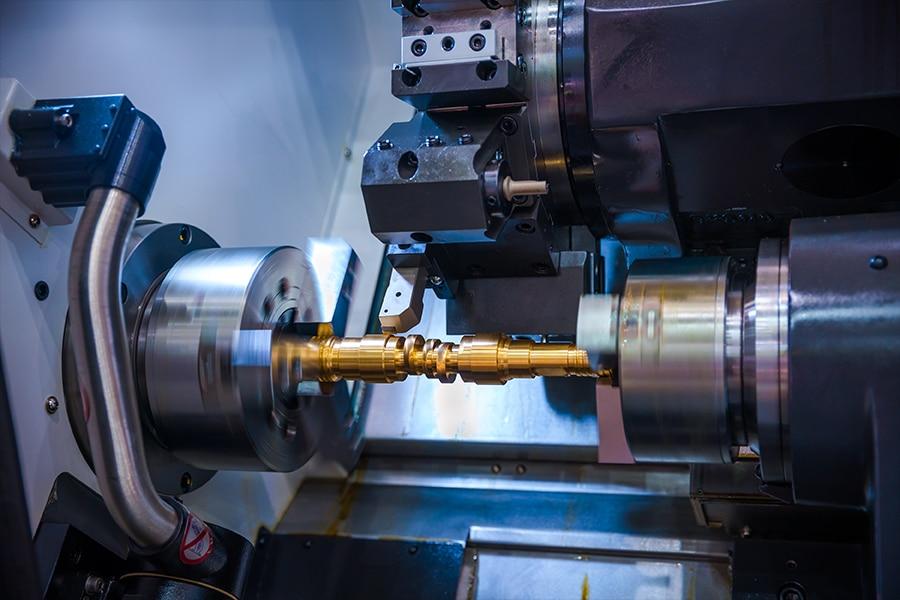CNC Machining of Aluminum Alloys: An Introduction to Services
Welcome to the world of CNC machining, where precision meets versatility in the creation of components from aluminum alloys. In this introduction to CNC machining services for aluminum alloys, we’ll explore the fundamentals of the process, its benefits, and its applications.
What is CNC Machining?
CNC stands for Computer Numerical Control. CNC machining is a manufacturing process that utilizes computer-controlled machines to remove material from a workpiece to create precise and intricate parts. The process involves automated movements of the machine tools, guided by a computer program that precisely dictates the machining operations.
Why Aluminum Alloys?
Aluminum alloys are favored materials in CNC machining due to their excellent combination of properties:
- Lightweight: Aluminum is much lighter than many other metals, making it ideal for applications where weight reduction is crucial.
- Strength: Aluminum alloys offer a good balance between strength and weight, making them suitable for a wide range of applications.
- Corrosion Resistance: Aluminum alloys form a protective oxide layer that provides resistance to corrosion, enhancing the longevity of the machined components.
- Thermal Conductivity: Aluminum alloys possess high thermal conductivity, making them suitable for applications requiring heat dissipation.
CNC Services for Aluminum Alloys:
- Precision Milling: CNC mills use rotating cutting tools to remove material from a workpiece. This process is ideal for creating complex shapes, pockets, and slots in aluminum components.
- Turning: CNC lathes are used to create cylindrical components by rotating the workpiece and removing material with stationary cutting tools.
- Drilling and Tapping: CNC machines can accurately drill holes of various sizes and tap threads into aluminum parts.
- Engraving: Intricate designs, logos, or labels can be engraved onto aluminum surfaces using CNC machining.
- Prototyping: CNC machining is an excellent choice for creating prototypes due to its ability to quickly produce accurate and detailed parts.
Benefits of CNC Machining:
- Precision: CNC machining offers high precision and tight tolerances, ensuring consistent quality in the finished parts.
- Versatility: It can handle a wide range of aluminum alloys, accommodating various mechanical and aesthetic requirements.
- Efficiency: CNC machining is a highly efficient process, reducing material waste and minimizing manual labor.
- Complex Geometry: Intricate designs and complex geometries can be achieved with CNC machining, which might be challenging with traditional methods.
- Scalability: CNC machining services can cater to both small-scale and large-scale production needs.
Applications:
CNC machining of aluminum alloys finds applications in various industries, including:
- Aerospace: Components requiring high strength-to-weight ratios and precise tolerances.
- Automotive: Engine components, chassis parts, and aesthetic details.
- Electronics: Heat sinks, enclosures, and connectors.
- Medical: Surgical instruments, implants, and diagnostic equipment.
- Consumer Goods: Gadgets, accessories, and appliances.
In conclusion, CNC machining of aluminum alloys offers a precise, efficient, and versatile method for creating intricate parts with various applications. Its ability to combine the lightweight and durable properties of aluminum alloys with high precision makes it an indispensable service in modern manufacturing. Whether you’re in aerospace, automotive, electronics, or other industries, CNC machining has the potential to transform your design concepts into reality.
Aluminum alloys are widely used in CNC machining due to their desirable properties, such as lightweight, high strength-to-weight ratio, excellent corrosion resistance, and good thermal conductivity. These alloys find applications in numerous industries, including aerospace, automotive, electronics, and medical devices.
The CNC machining process of aluminum alloys begins with the design of the part using computer-aided design (CAD) software. This design is then translated into a set of instructions called G-code, which is fed into the CNC machine’s computer system. The machine uses this code to control the cutting tools and movements.
During the CNC machining process, the aluminum alloy workpiece is firmly secured to a bed or workholding device. The cutting tools, such as end mills or drills, are mounted on the machine’s spindle and accurately guided along multiple axes (usually three or more) to remove unwanted material.
Various machining operations can be performed, depending on the desired part geometry and specifications. These operations may include facing, milling, drilling, turning, reaming, and tapping. CNC machines can achieve tight tolerances and create complex shapes, including pockets, holes, threads, and intricate surface finishes.
To ensure the successful machining of aluminum alloys, some important factors need to be considered. Aluminum alloys have different grades and properties, so selecting the appropriate alloy for the specific application is crucial. The cutting tools, feeds, speeds, and coolant/lubricant choices should also be optimized to achieve the desired surface finish, chip control, and prevent tool wear.
Xielifeng Tech is a CNC machining factory in China that provides on-demand CNC machining services,

